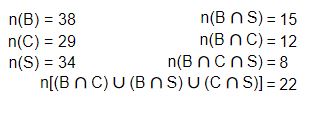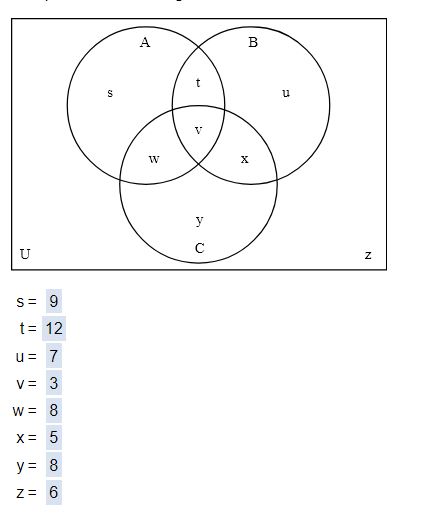Deliverable 2 - Tutoring on the Normal Distribution
Assignment Content
Competency
Apply the normal distribution, standard normal distribution, and central limit theorem.
Student Success Criteria
View the grading rubric for this deliverable by selecting the “This item is graded with a rubric” link, which is located in the Details & Information pane.
Scenario
Frank has only had a brief introduction to statistics when he was in high school 12 years ago, and that did not cover inferential statistics. He is not confident in his ability to answer some of the problems posed in the course.
As Frank's tutor, you need to provide Frank with guidance and instruction on a spreadsheet he has partially filled out. Your job is to help him understand and comprehend the material. You should not simply be providing him with an answer as this will not help when it comes time to take the test. Instead, you will be providing a step-by-step breakdown of the problems including an explanation on why you did each step and using proper terminology.
What to Submit
To complete this assignment, you must first download the spreadsheet, and then complete it by including the following items on the spreadsheet:
Deliverable 2 - Tutoring on the Normal Distribution.xlsx
Incorrect Answers - Correct any wrong answers. You must also explain the error performed in the problem in your own words.
Partially Finished Work - Complete any partially completed work. Make sure to provide step-by-step instructions including explanations.
Blank Questions - Show how to complete any blank questions by providing step-by-step instructions including explanations.
Your step-by-step breakdown of the problems, including explanations and calculations performed, should be present within the Excel spreadsheet provided.
My Course Tutor experts are good at providing academic assistance services to students at all academic levels. The contents included in the attached excel file have been listed below. You can download the excel file, and practice the calculations, or send as an email, or contact us via WhatsApp so we can provide you with a step to step solutions to your problem.
Instructions: The following questions on the next six tabs are shown to you by a student who is asking for help. Your job is to help the student walk through the problems by showing the student how to solve each problem in detail. You are expected to explain all of the steps in your own words.
Key:
This problem is an incorrect. Your job is to find the errors, correct the errors, and explain what they did wrong.
This problem is partially finished. You must complete the problem by showing all steps and explain your corrections.
This problem is blank. You must start from scratch and explain how you will approach the problem, how you solve it, and explain why you took each step.
Assume that a randomly selected subject is given a bone density test. Those tests follow a standard normal distribution. Find the probability that the bone density score for this subject is between -0.87 and 1.84.
Show your calculations using Excel functions in the area to the right of this text box and answer the problem with explanations below.
The U.S. Airforce requires that pilots have a height between 64 in. and 72 in. If women’s heights are normally distributed with a mean of 64.1 in. and a standard deviation of 2.31 in, find the percentage of women that meet the height requirement.
Show your calculations using Excel functions in the area to the right of this text box and answer the problem with explanations below.
Women’s pulse rates are normally distributed with a mean of 69.9 beats per minute and a standard deviation of 11.7 beats per minute. What is the z-score for a woman having a pulse rate of 63 beats per minute?
Student’s incorrect answer:
Let 𝒛 =(𝒙−𝝁)/𝝈
𝒛 =((𝟔𝟗.𝟗 − 𝟔𝟑))/(𝟏𝟏.𝟕)
𝒛 = 𝟎.𝟓𝟗
Identify where the student went wrong when solving the problem above. Show how to correctly calculate the answer using Excel in the area to the right of this text box. Finish the problem by stating how to correctly set up the problem and solve it below.
What is the cumulative area from the left under the curve for a z-score of -0.723? What is the area on the right of that z-score? Hint: You will have two answers (one for the left and one for the right).
Student’s partially finished answer:
The first part is to find the cumulative area from the left under the curve for a z-score of -0.723. This means that I need to find the probability that a z-score is less than -0.723.
Show your calculations using Excel functions in the area to the right of this text box and finish answering the problem with explanations below.
If the area under the standard normal distribution curve is 0.2343 from the right, what is the corresponding z-score?
Student’s incorrect answer:
We plug in “=NORM.S.INV(0.2343)” into Excel and get a z-score of -0.724.
Identify where the student went wrong when solving the problem above. Show how to correctly calculate the answer using Excel in the area to the right of this text box. Finish the problem by stating how to correctly set up the problem and solve it below.
A research shows that the Richter scale magnitudes of earthquakes are normally distributed with a mean of 1.533 and a standard deviation of 0.75. Earthquakes with magnitudes less than 2.00 are considered "microearthquakes" that humans do not feel. What percentage of earthquakes fall into this category?
Student’s partially finished answer:
We need to find the probability that earthquakes fall into the microearthquake category. The first step is to find the probability that the Richter scale is less than 2.00.
Show your calculations using Excel functions in the area to the right of this text box and finish answering the problem with explanations below.

